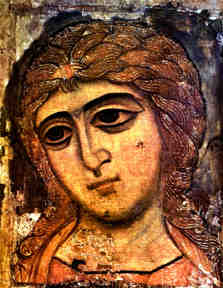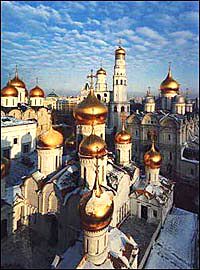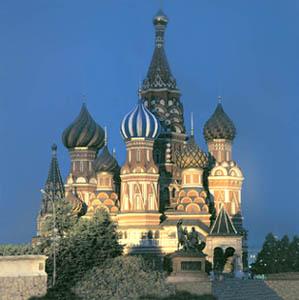Two years before his own death in 1584 Ivan quarreled with his oldest son and in the heat of argument stabbed him to death. He never overcame the grief his vicious temper had brought him. The murder doomed the dynasty to extinction, for Ivan's sole remaining heir, his younger son Fedor, was a simpleton whose marriage was barren.
The end of the dynasty would bring turmoil. The chaos in which Ivan left the administration, the bitterly resentment of the boyars who had survived his purges, the sense of insecurity and fright felt by men of every class, the foreign enemies whose hatred of Russia Ivan's campaigns of pillage, torture, and desolation had sharpened--all compounded to leave the land weak and divided. For many years there would be serious question whether the nation could survive. Although Ivan Iv left the government of Russia, or Muscovy as the sixteenth century still Called it, in turmoil if not in chaos, the framework of the central administration remained essentially what it had been under Ivan III. The grand prince, become a tsar at the coronation of Ivan the Terrible, was customarily the oldest surviving son of the late ruler. The same dynasty--called variously the line of Rurik or the line of Daniel or the line of Monomakh--had succeeded in unbroken descent since the time of Daniel, the youngest son of Alexander Nevsky.
 Although Ivan IV claimed to rule by divine right and fought every check upon his authority, custom required the prince or tsar to seek the advice of the boyar duma which met frequently, sometimes daily, with the tsar presiding. The Sudebnik, the law code that Ivan IV issued in 1550, even required the duma's approval of all important decisions. Laws or ukazes declared' in Duma meetings began, '.The tsar has directed and the boyars have agreed..' There can be no doubt of Ivan's ability to cow any who might oppose his will in the duma. Yet it was, in part at least, to free himself from even this mild restraint that the tsar convoked the Zemskii Sobor to still the voice of the boyars in a chorus of commoners votes, and then organized the oprichnina to avoid meeting with the duma altogether.
Although Ivan IV claimed to rule by divine right and fought every check upon his authority, custom required the prince or tsar to seek the advice of the boyar duma which met frequently, sometimes daily, with the tsar presiding. The Sudebnik, the law code that Ivan IV issued in 1550, even required the duma's approval of all important decisions. Laws or ukazes declared' in Duma meetings began, '.The tsar has directed and the boyars have agreed..' There can be no doubt of Ivan's ability to cow any who might oppose his will in the duma. Yet it was, in part at least, to free himself from even this mild restraint that the tsar convoked the Zemskii Sobor to still the voice of the boyars in a chorus of commoners votes, and then organized the oprichnina to avoid meeting with the duma altogether.
As the small principality of Moscow grew into the Russian state and acquired enormous territory, the household officials who had served the prince when his patrimony was hardly larger than a great landowners estate could not handle the multiplicity of problems facing the nation-state. New government bureaus called prizes were set up, each headed by an appointee of the grand prince and staffed with a corps of clerks. Some of these bureaus dealt with particular governmental functions, whereas others administered new lands added by conquest.
 One prikaz handled receipts and disbursements like any treasury department in the West; another supervised embassies sent abroad and foreign missions received in Moscow like any foreign ministry in western Europe; still another dealt with military matters like any western war office. Alongside these bureaus created on functional lines were other bureaus whose responsibility it was to deal with all types of administrative matters in a given territory, particularly in one recently acquired. A prikaz for Novgorod governed that wide area after its absorption by Ivan III . When the principality of Tver was added to Moscow there had to be a prikaz to administer it.
One prikaz handled receipts and disbursements like any treasury department in the West; another supervised embassies sent abroad and foreign missions received in Moscow like any foreign ministry in western Europe; still another dealt with military matters like any western war office. Alongside these bureaus created on functional lines were other bureaus whose responsibility it was to deal with all types of administrative matters in a given territory, particularly in one recently acquired. A prikaz for Novgorod governed that wide area after its absorption by Ivan III . When the principality of Tver was added to Moscow there had to be a prikaz to administer it.
The conquest of Kazan added another to this growing list, and late in the sixteenth century another prikaz, or bureau or colonial office, came into existence to govern Siberia. There was no order and little logic in the way in which these bureaus proliferated. A new function added or a new district conquered seemed to dictate the creation of another prikaz. By the end of the sixteenth century there were thirty such departments; by the time Peter the Great a century later swept them away and set up a new administrative pattern the number had doubled. Often their functions overlapped; several of them, for example, gathered and spent revenue. *Despite some remarkable achievements, all in all Ivan the Terrible set the stage for an era of unbelievable confusion and disorder which has gone down in history as the Time of Trouble.


|






